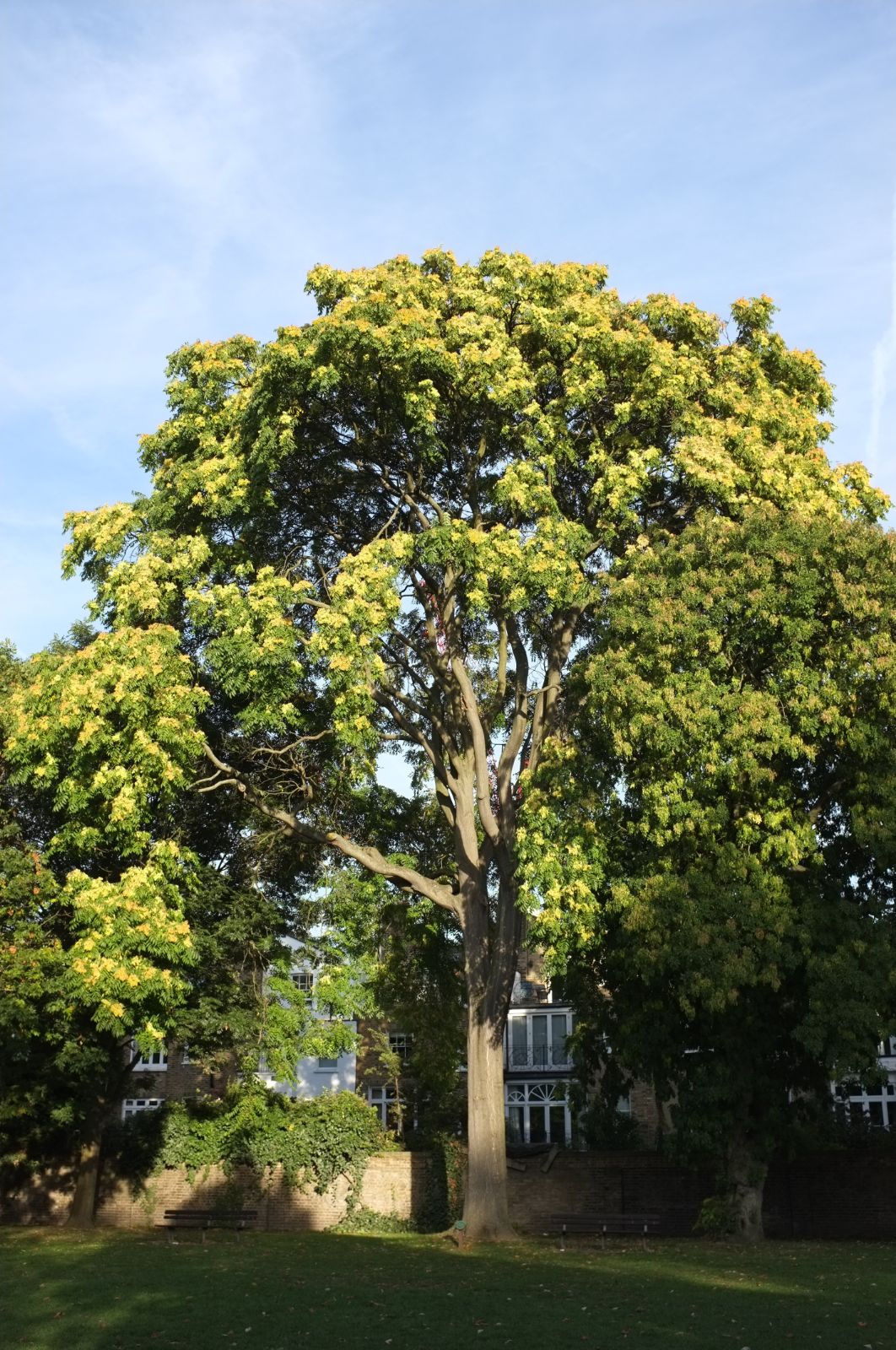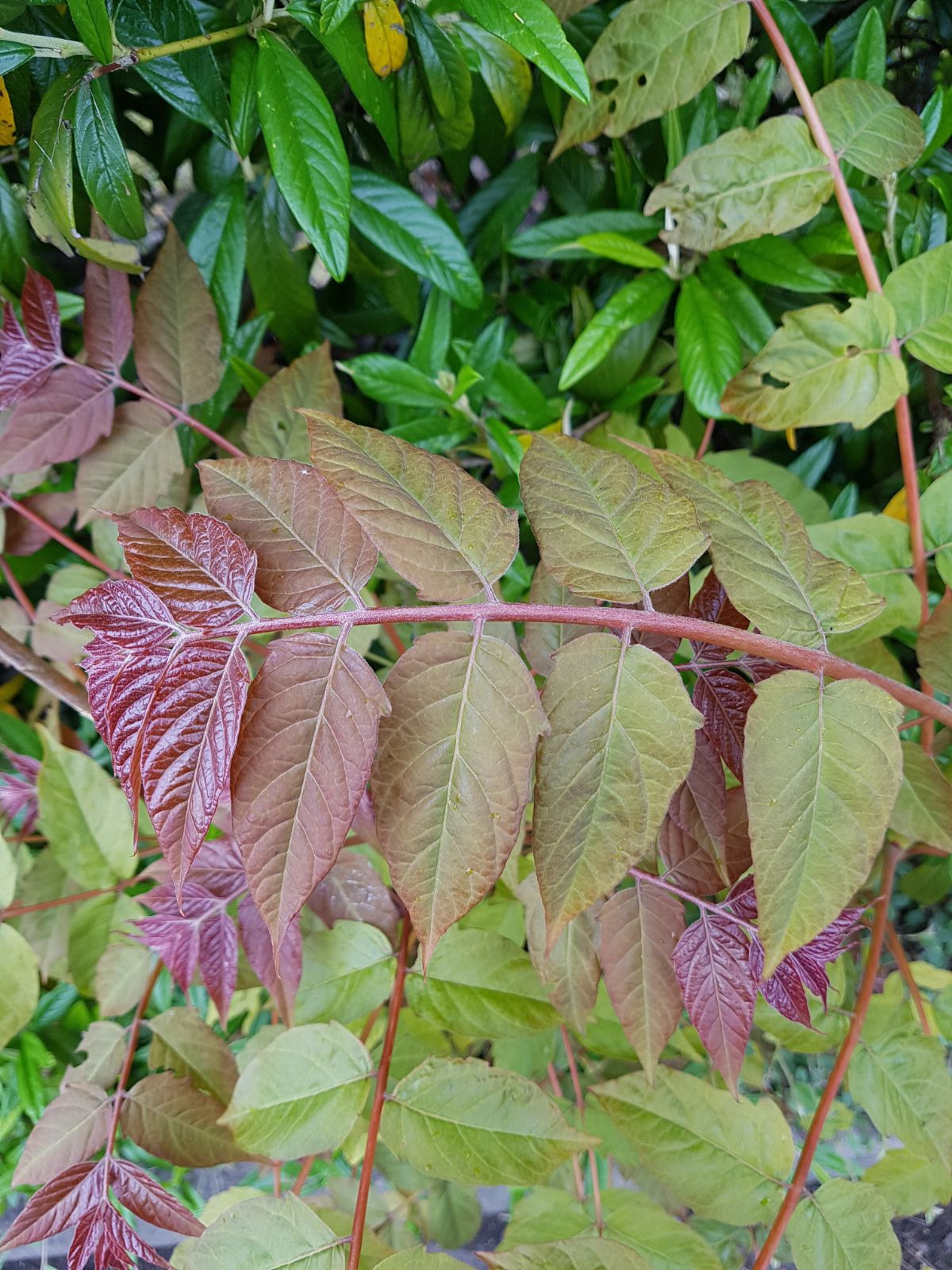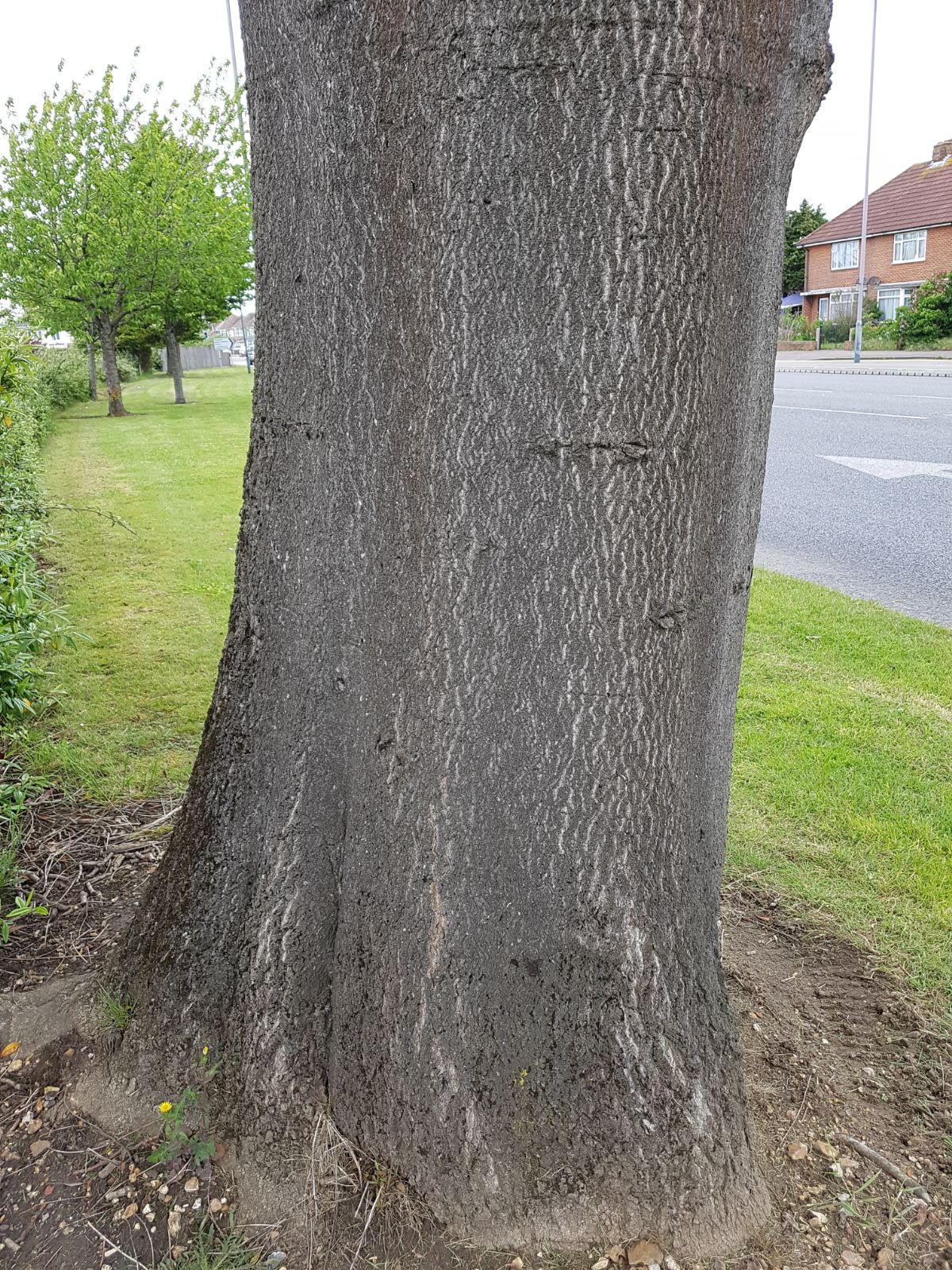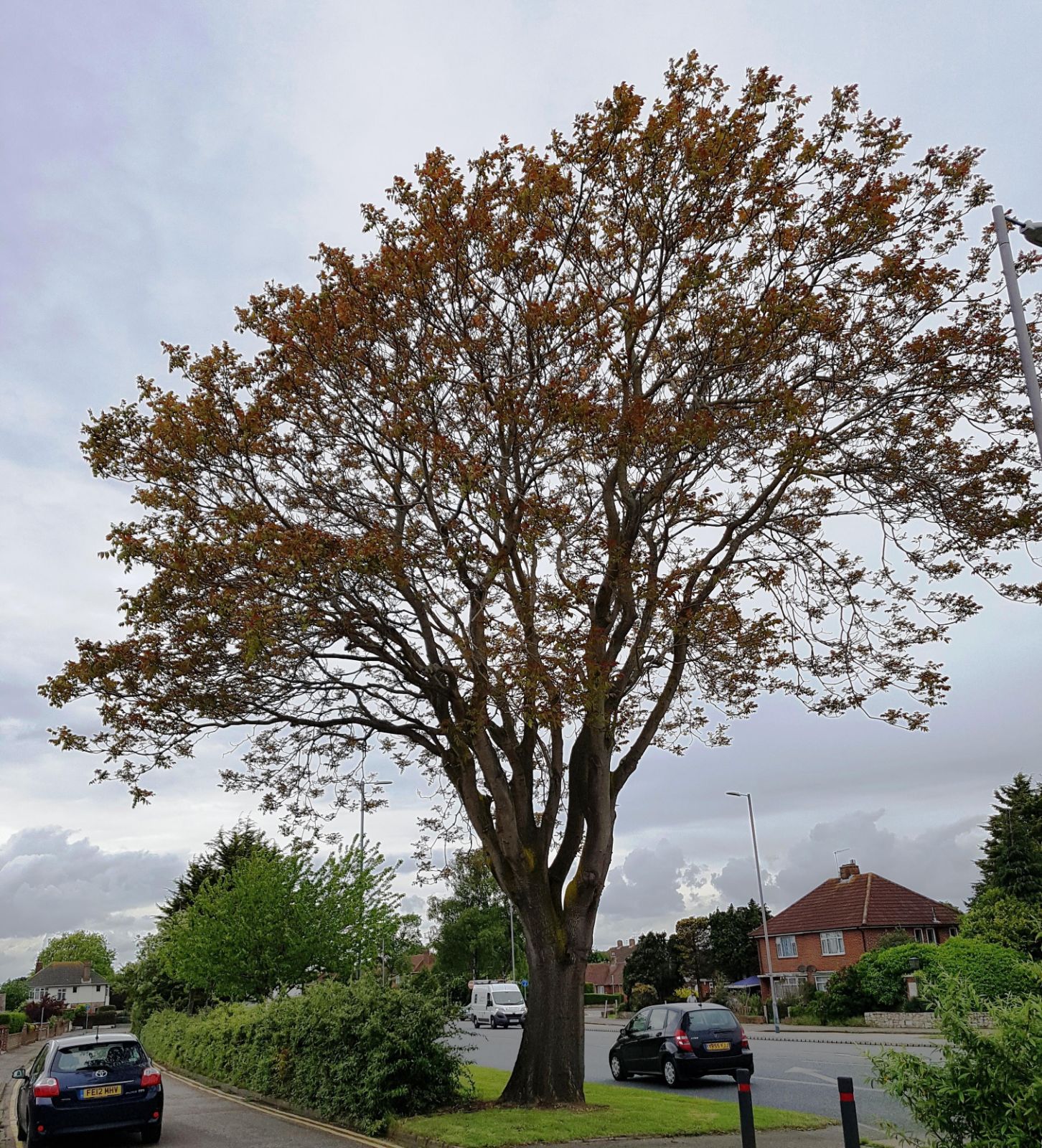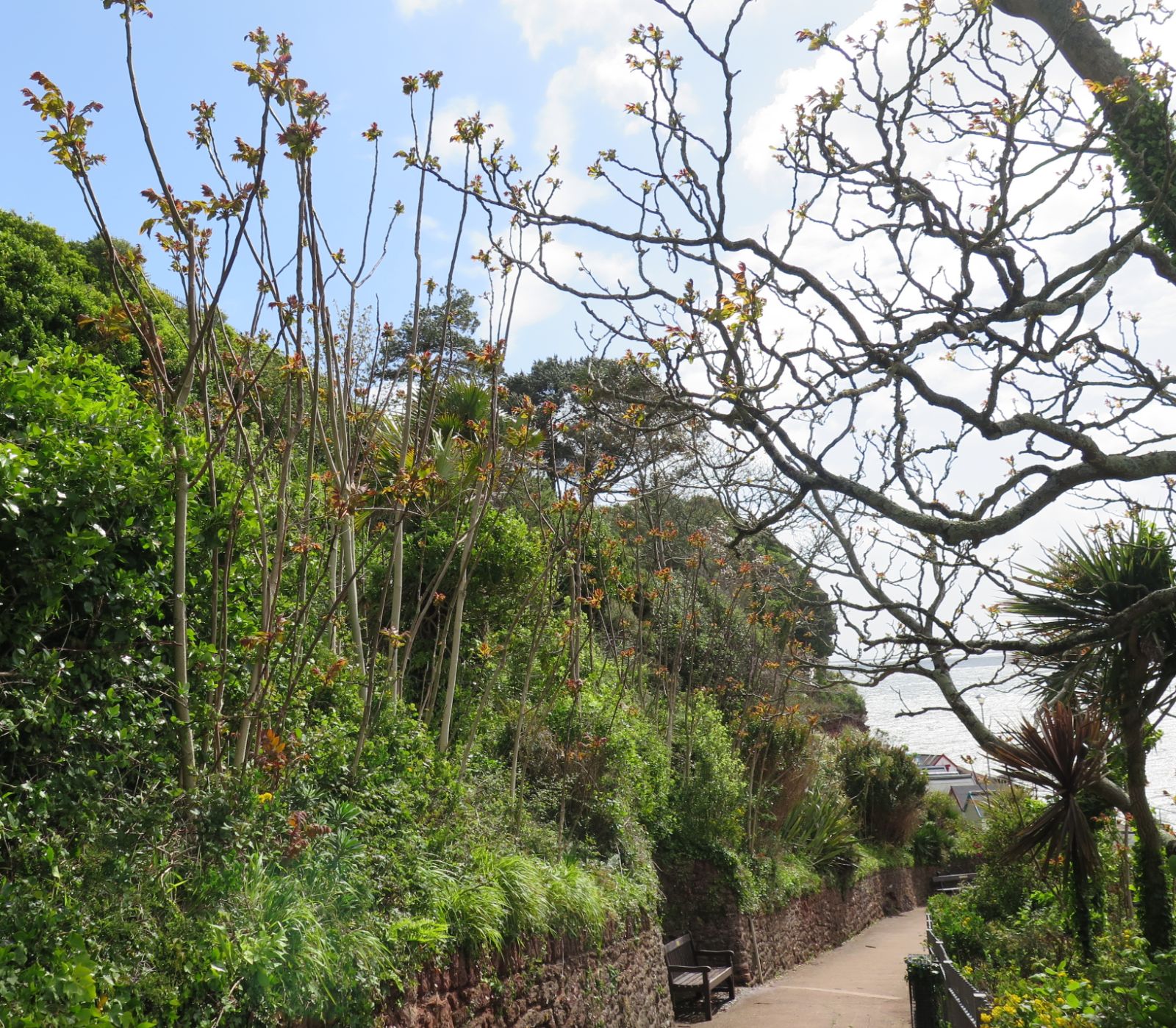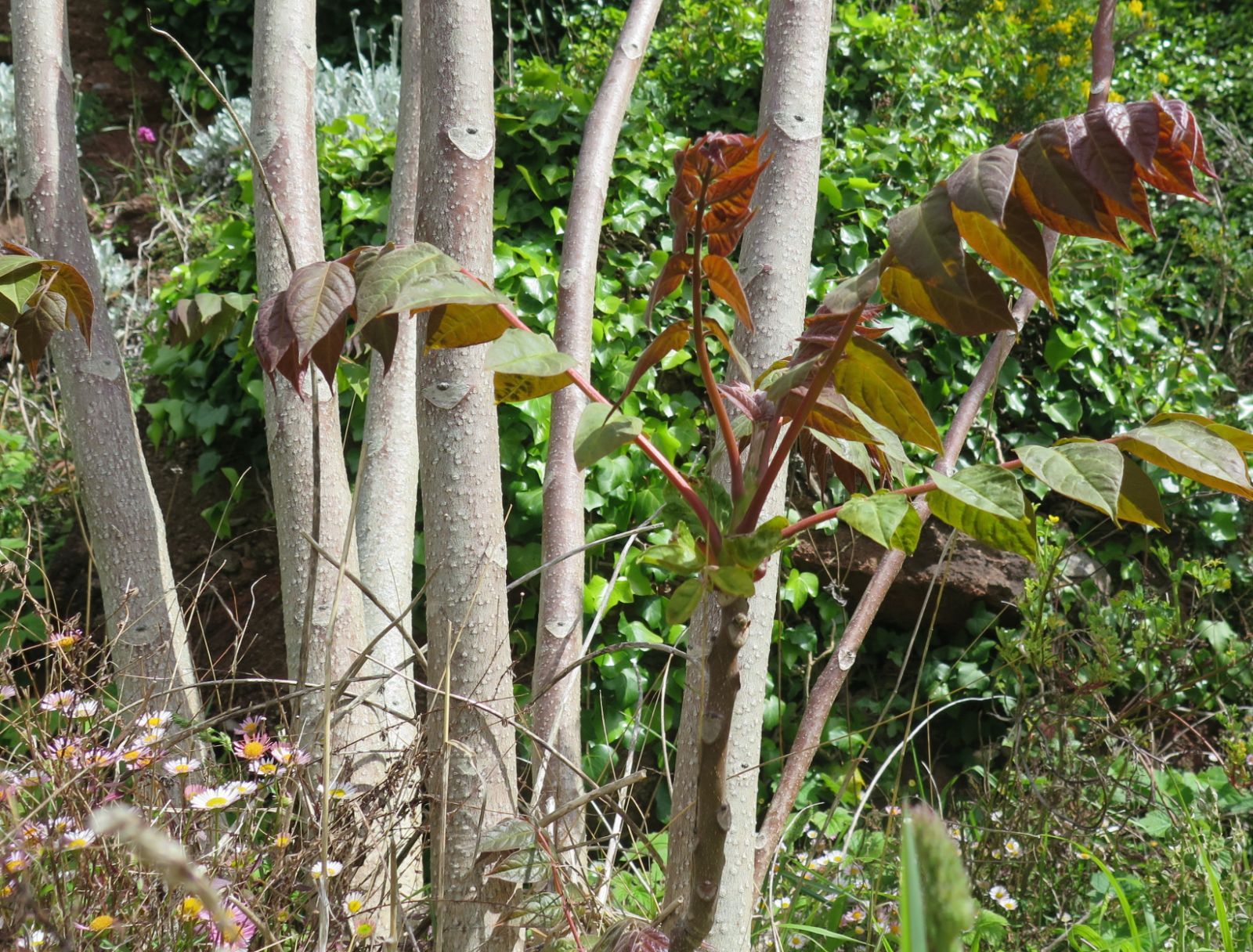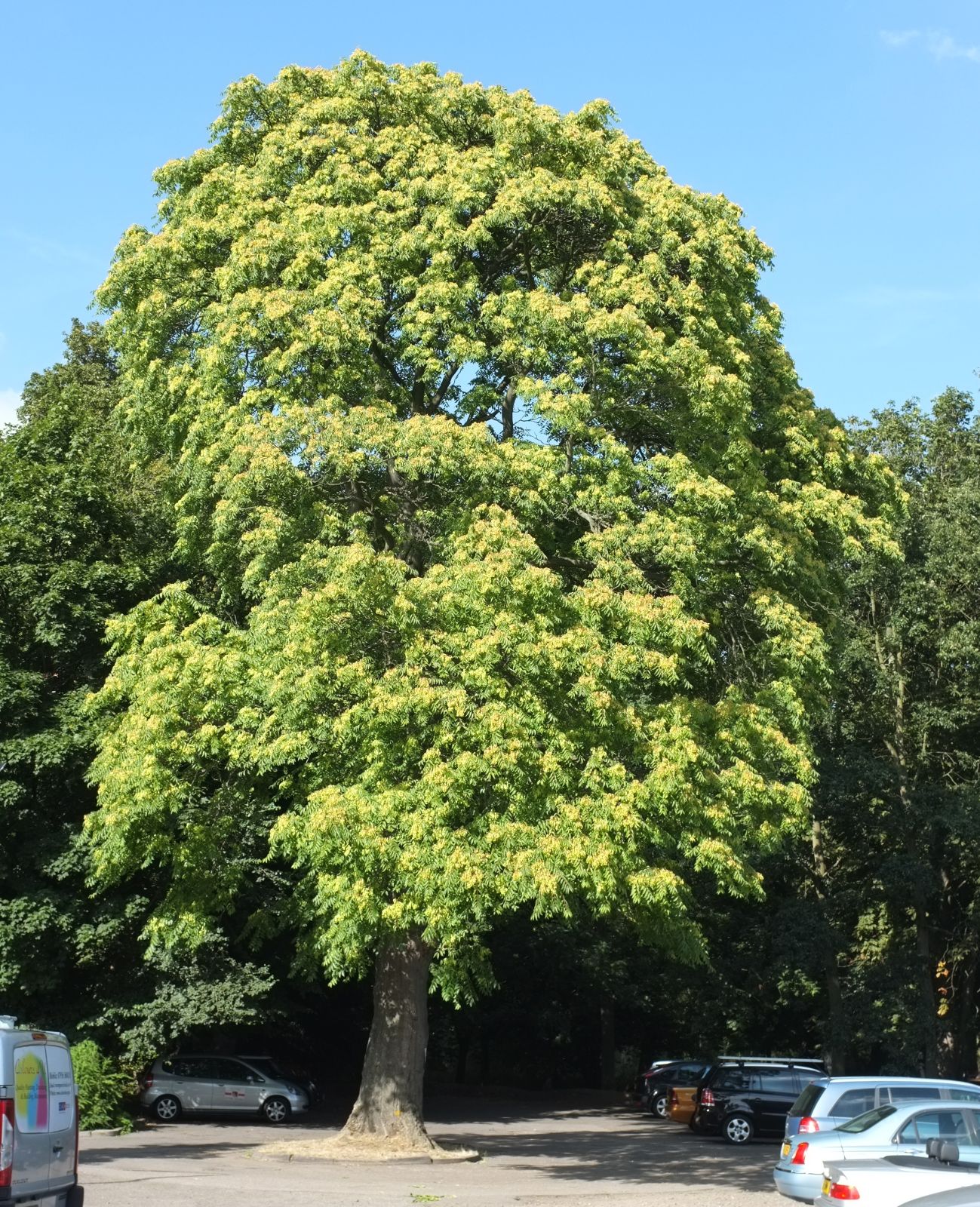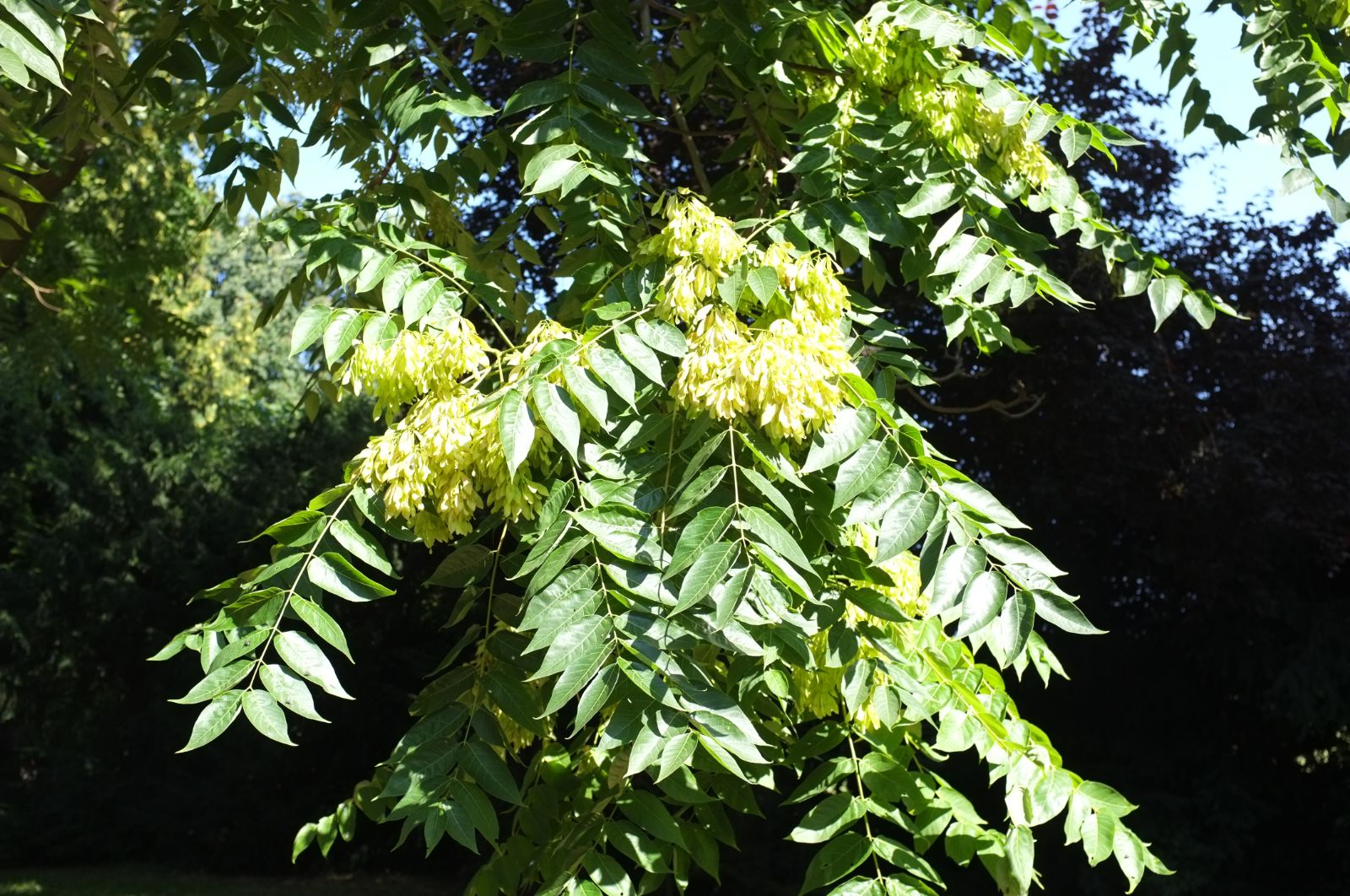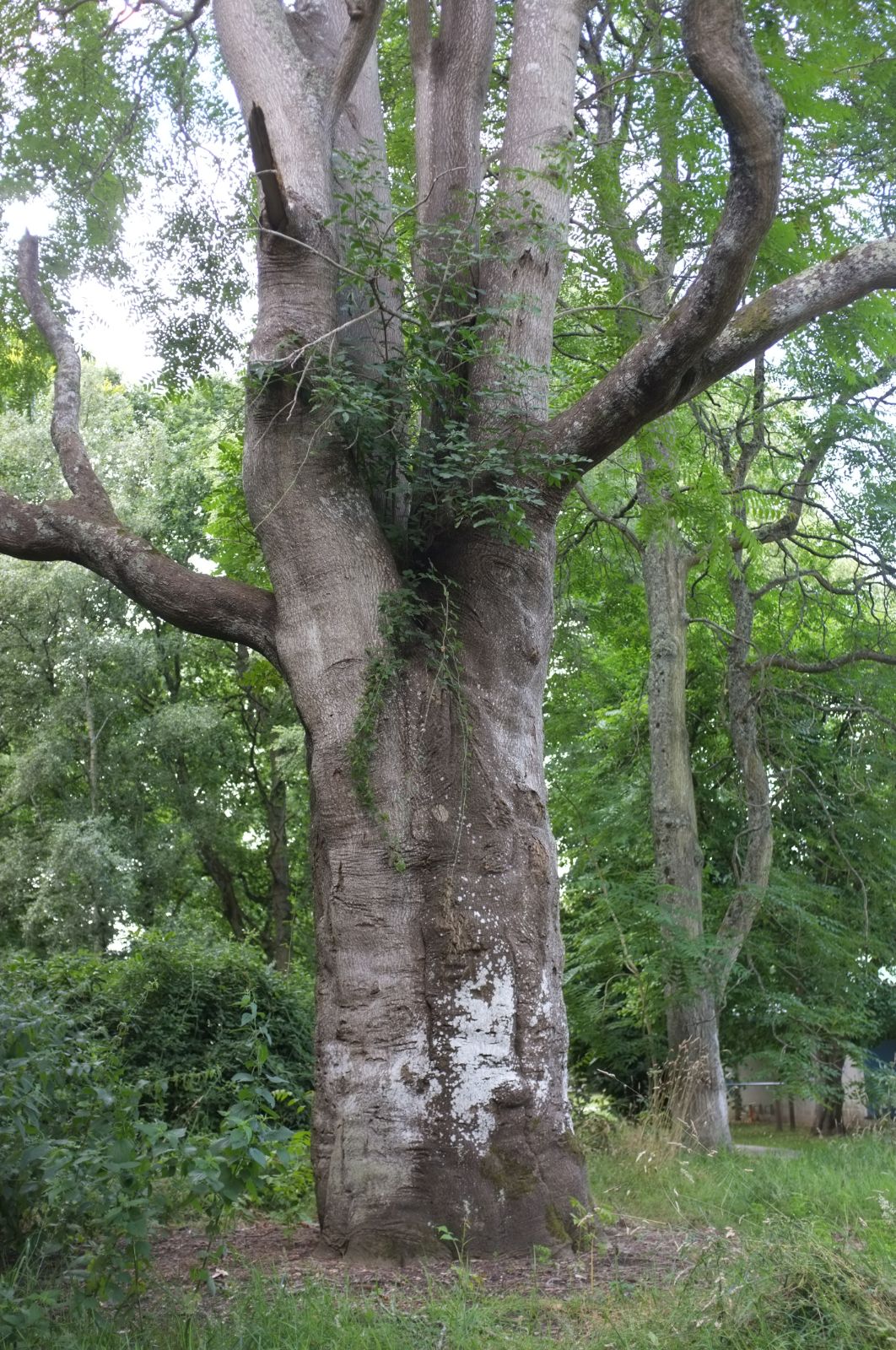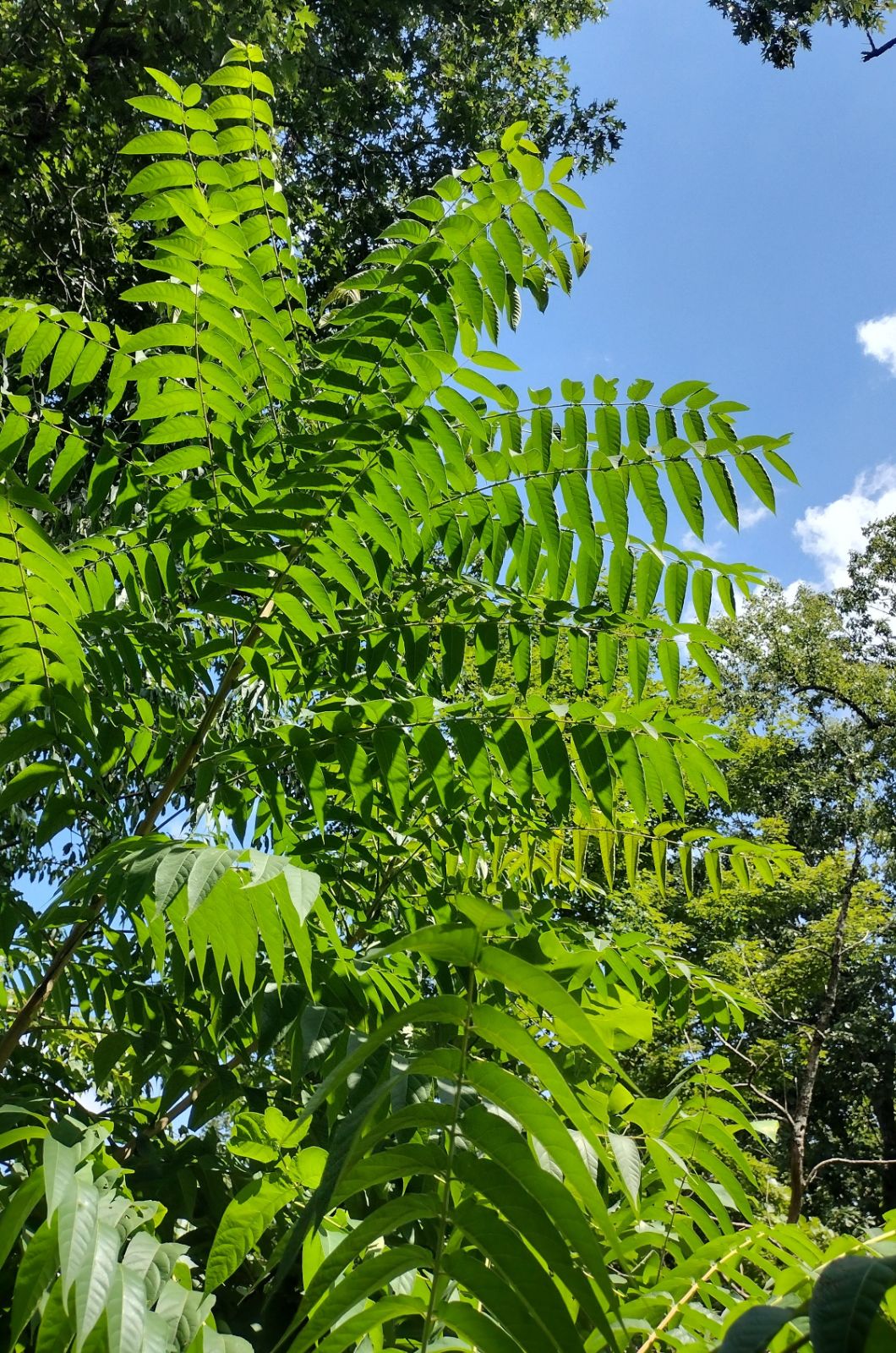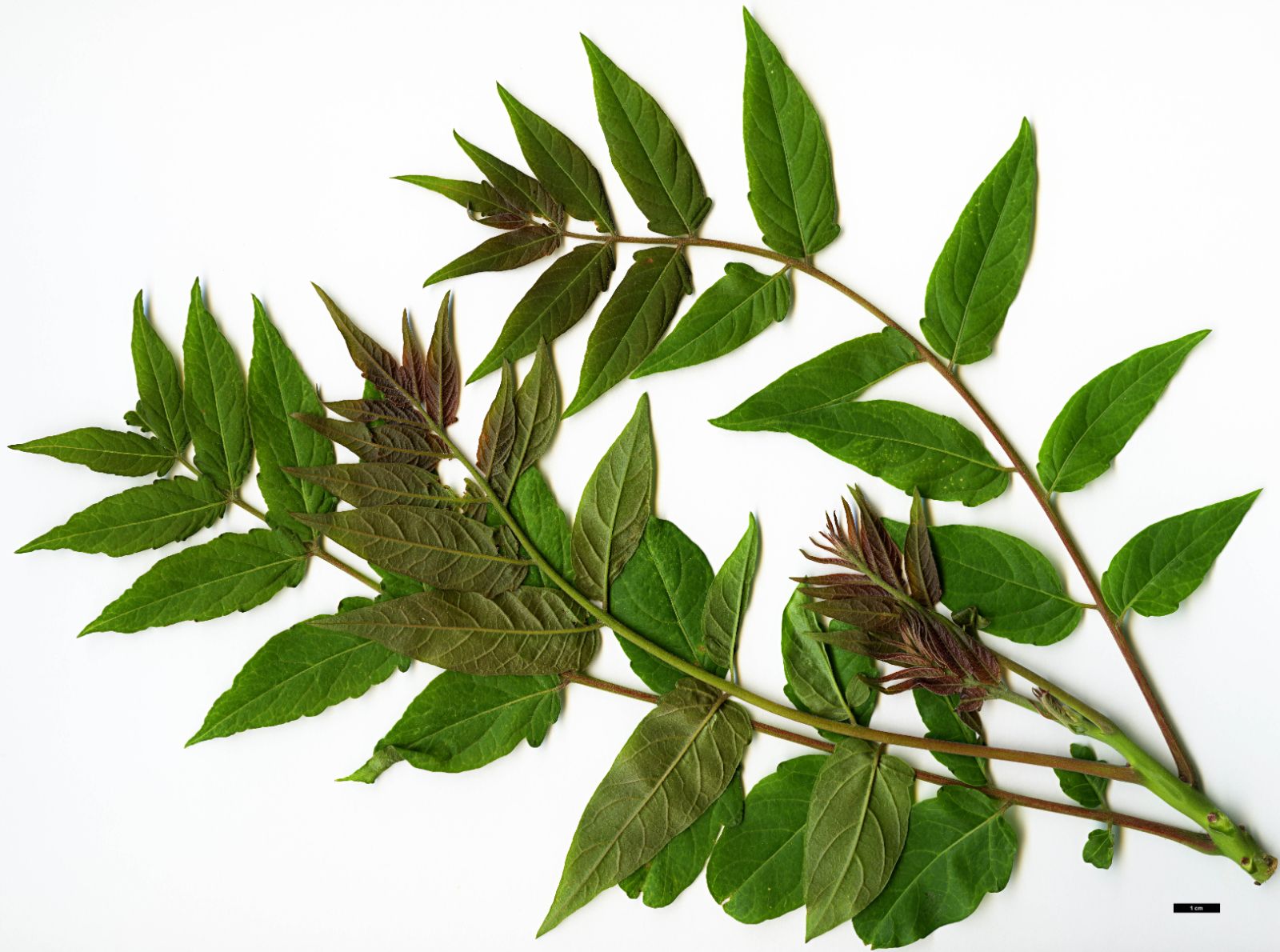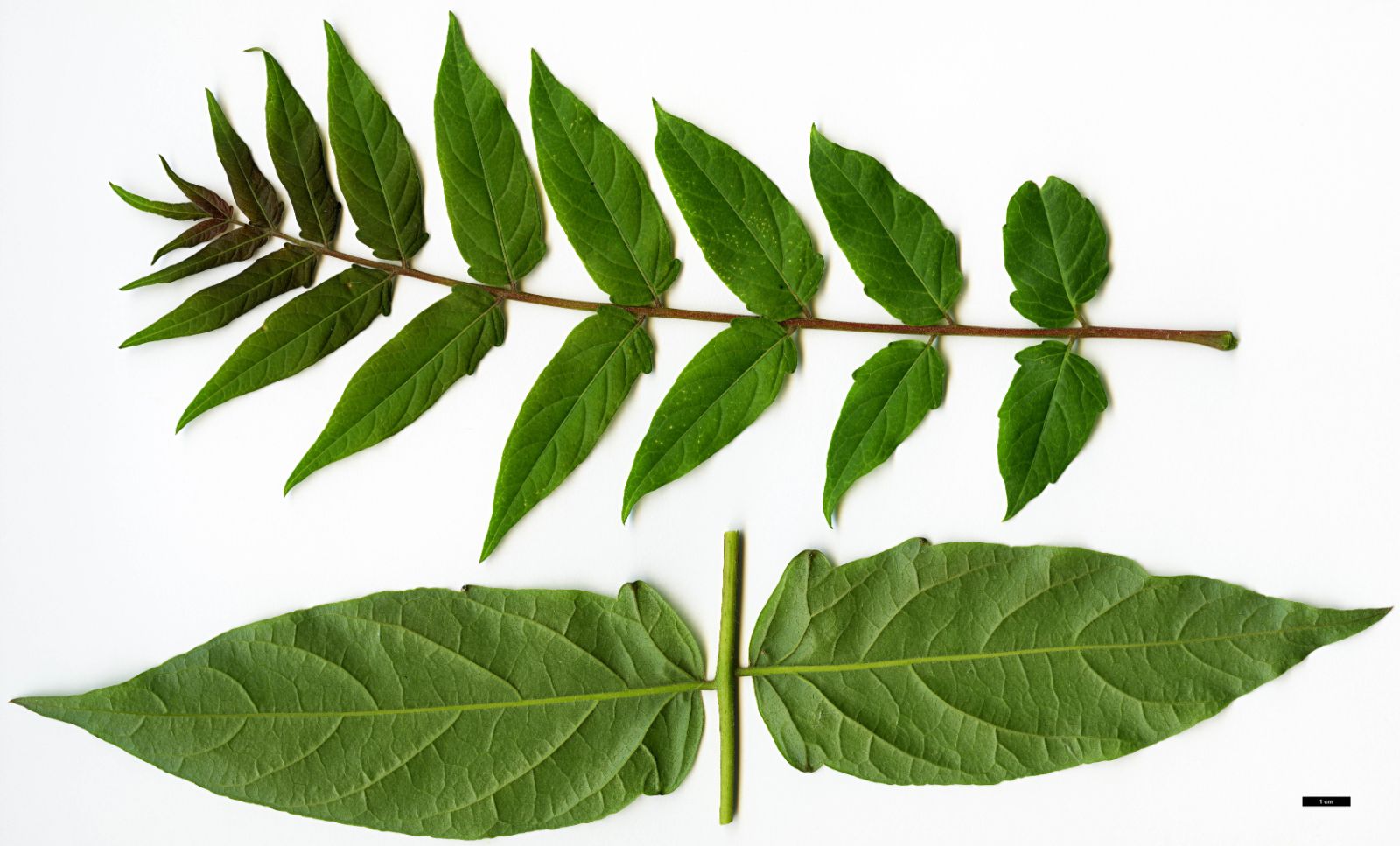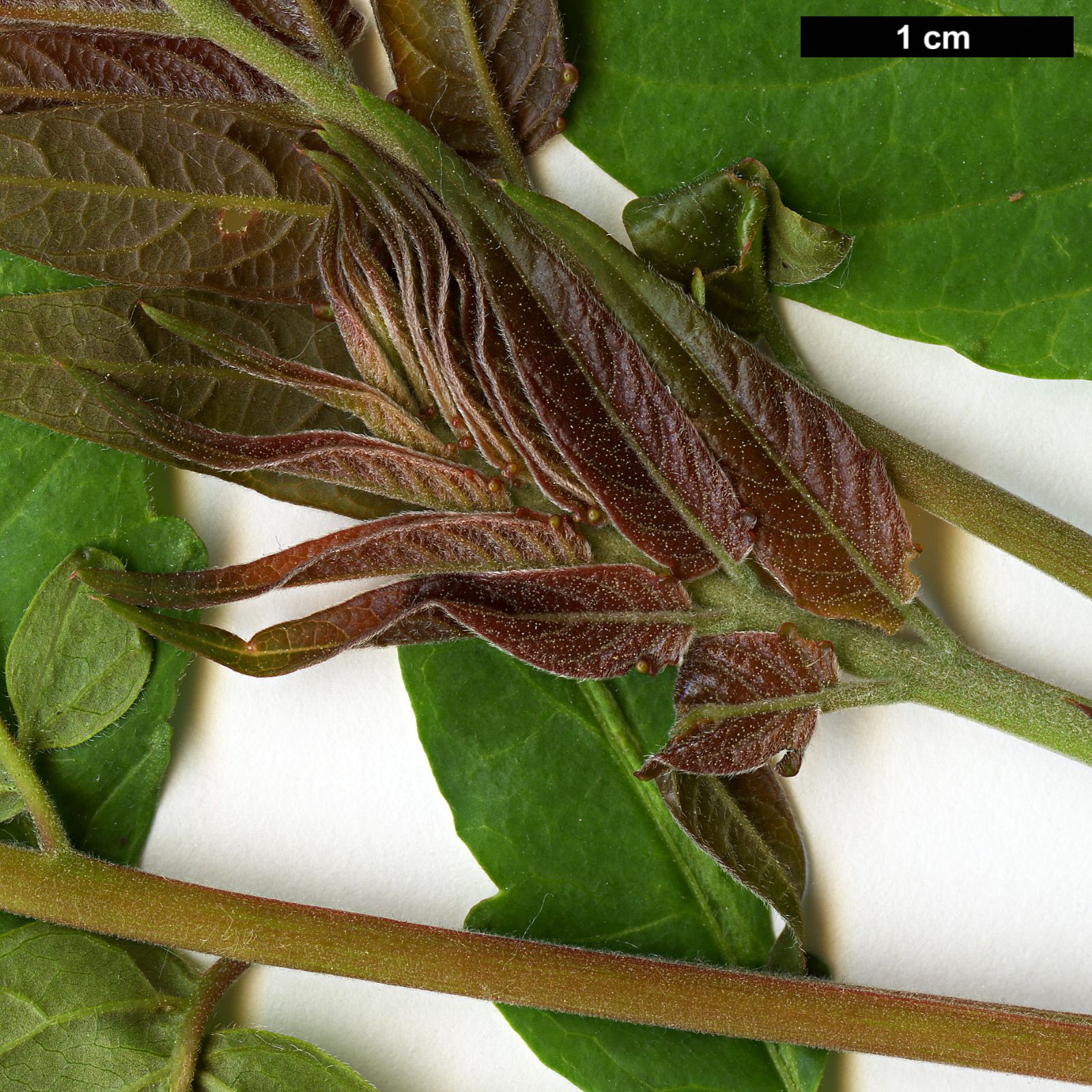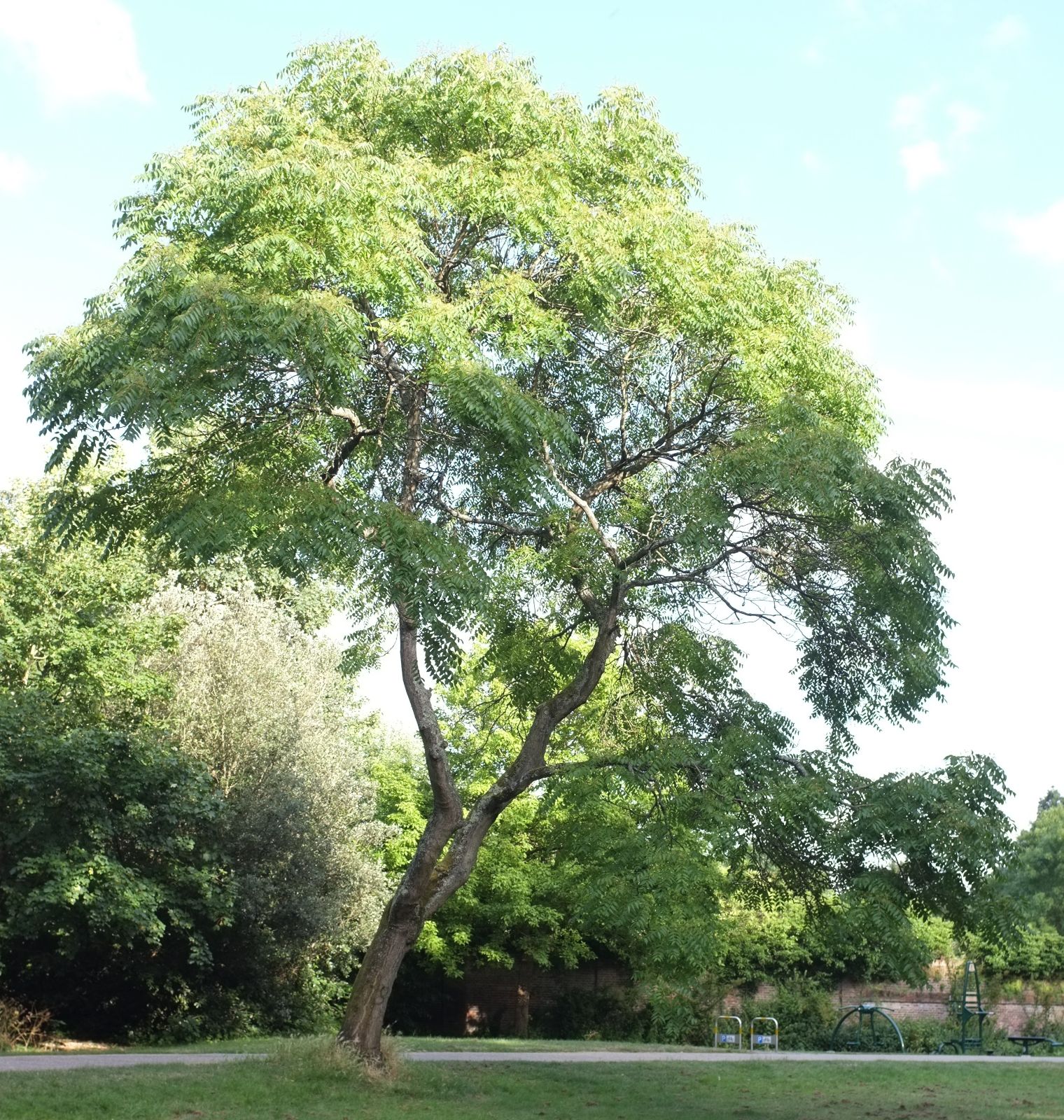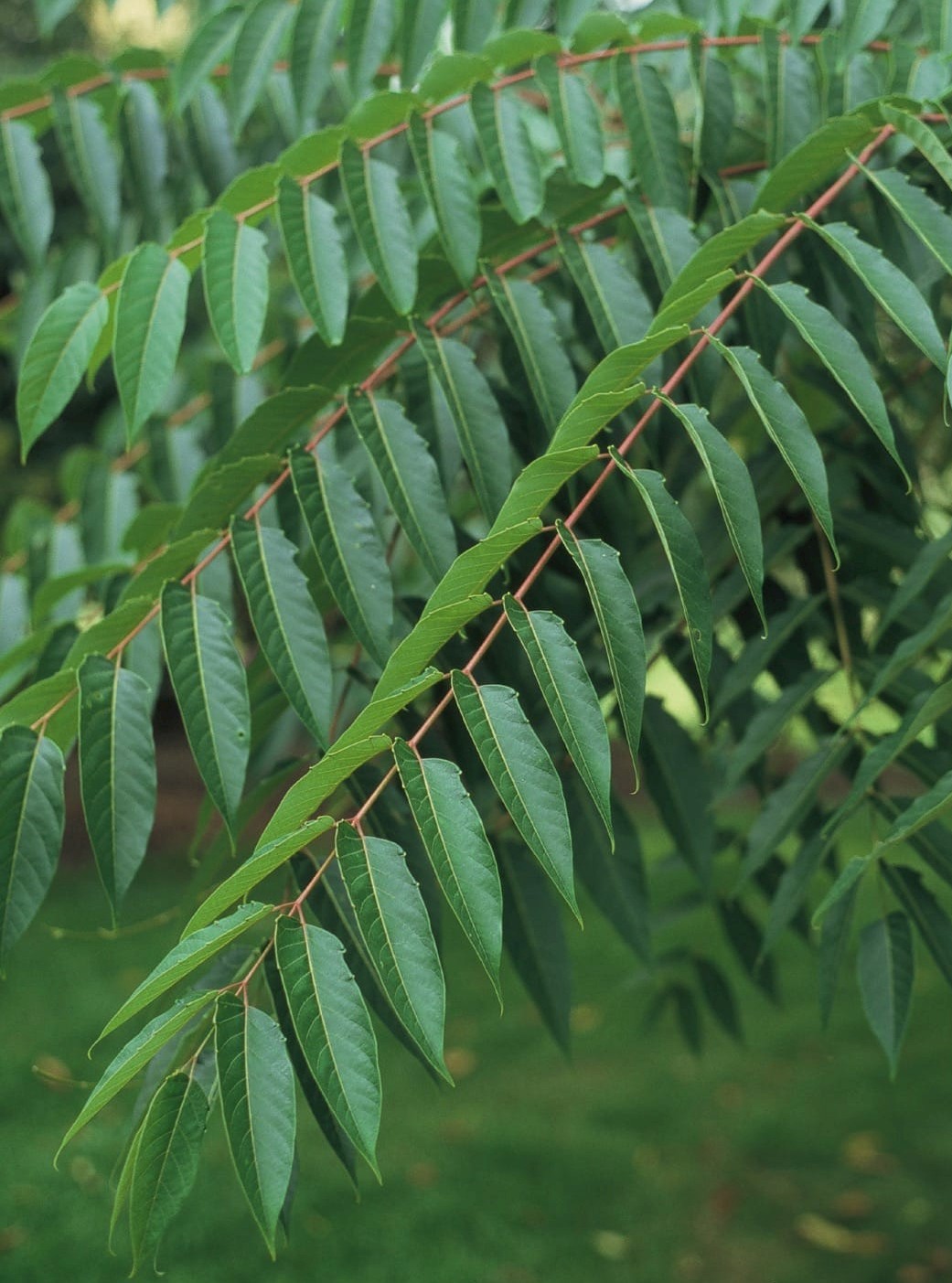Ailanthus altissima
Credits
Article from Bean's Trees and Shrubs Hardy in the British Isles
Article from New Trees by John Grimshaw & Ross Bayton
Recommended citation
'Ailanthus altissima' from the website Trees and Shrubs Online (treesandshrubsonline.
Genus
Common Names
- Tree of Heaven
Synonyms
- Toxicodendron altissimum Mill.
- Ailanthus glandulosa Desf.
Infraspecifics
Other taxa in genus
A large, deciduous, often unisexual tree, frequently 50 to 70 ft, rarely loo ft high, with a trunk 2 to 3 ft in diameter, and a rounded head of branches. The older bark is marked with numerous grey fissures. Leaves pinnate, from 1 to 11⁄2 ft long on adult trees (often twice as large on young ones), composed of fifteen to over thirty leaflets, foetid. Leaflets 3 to 6 in. long, ovate, pointed, widely cuneate to truncate or slightly retuse at the base; the margin entire except for one to three teeth on both sides near the base, each marked with a conspicuous gland; stalks 1⁄4 to 3⁄4 in. long. Flowers in terminal panicles, with male and female flowers as a rule on separate trees (but not always); greenish, the male ones evil-smelling. The fruit consists of one to three, sometimes five, keys like those of the ash, several hundreds of which are borne on large branching panicles 9 to 12 in. high and through. Each key (samara) is about 11⁄2 in. long, 1⁄2 in. wide, flat, thin, narrow-oblong, tapering towards both ends, with one seed in the centre. The keys are reddish brown, and a tree in full fruit is handsome. They have a peculiar twist at each end, which causes them to revolve with great rapidity as they fall. They are thus much longer reaching the ground, and in even a slight movement of the air will be carried a considerable distance. This is no doubt a provision to help in the dissemination of the seeds.
Native of N. China; introduced by Peter Collinson in 1751. It is hardy over most parts of the British Isles, but apparently succeeds best in the south of England. Few trees thrive so well in towns, but for planting there female trees should alone be used, owing to the objectionable odour of the male when in flower. For this purpose, the tree should be increased by root-cuttings taken from a female tree, as the sex of seedling plants cannot be determined until they are too big to transplant. Among pinnate-leaved trees of similar character, the ailanthus is easily recognised by the glandular teeth near the base of the leaflets. The generic name is derived from ‘Ailanto’, the native name for A. moluccana, signifying a tree tall enough to reach the skies. Hence also the popular name of ‘Tree of Heaven’. It is very effectively used as a fine-foliaged plant in summer by cutting young trees back to the ground in spring, and reducing the young shoots to one. Treated in this way, and given good soil, leaves 4 ft long are produced.
The tallest specimen recorded recently in the British Isles grows at Endsleigh in Devon (95 × 9 ft in 1963). Others of size are: Selborne, Dorset, 82 × 121⁄4 ft (1964), Westonbirt, Glos., 80 × 8 ft (1967), St James’s Park, London, 68 × 9 ft (1963).
From the Supplement (Vol. V)
A. giraldii – The trees at Kew mentioned are certainly A. altissima, and there is nothing in Dode’s description to suggest that his A. giraldii is anything more than a minor variant of that species.
Rehder’s var. duclouxii (not forma as stated) is presumably based on an introduction by Père Ducloux, which was named A. duclouxii by Dode, but without description. A tree at Borde Hill in Sussex under this name, of unknown provenance, appears to be a good and vigorous form of A. altissima. It was 20 ft high in 1933 and now measures 75 × 71⁄2 ft (1985).
From New Trees
Ailanthus altissima (Mill.) Swingle
This species was described by Bean (B265, S69) and Krüssmann (K126). Although it makes a handsome tree, it has become well known as an invasive plant in many parts of the world.
A giraldii Dode
This species is of rather doubtful standing. Dode founded it on a specimen collected by Père Farges in E. Szechwan in 1893 and on young trees growing in French nurseries, raised from seed collected by French missionaries (probably by Farges himself and by Ducloux). The name chosen by Dode suggests that seed, or specimens, must also have been sent by the missionary Giraldi, who botanised in Shensi. Among the nurseries mentioned by Dode as having seedlings of this ailanthus was Messrs Chenault: but a tree at Kew received from that firm in 1907 as A. glandulosa giraldii has recently been examined and proves to differ in no botanical respect from A. altissima (glandulosa). This doubt has arisen too recently for it to have been possible to examine material from other cultivated trees.A. giraldii is said to differ from A. altissima in leaves with larger, more numerous leaflets, more persistently downy on the undersides; longer panicles and larger fruits. The young wood is stated to be brown and the leaf-stalks purplish. In f. duclouxii Rehd., the young wood is described as light orange; leaf-stalks green; leaves less downy beneath except on the veins.'Erythrocarpa'
Leaves darker than in the type; fruits red. Described by Carrière in Rev. Hort., 1867, p. 419.'Pendulifolia'
This has its branches erect as in the type, but the leaves, which are more than ordinarily long, hang downwards, rather than stand out horizontally as in the type. It also makes a bushier tree. It originated before 1889.
var. sutchuenensis (Dode) Rehd. & Wils.
Synonyms
A. sutchuenensis Dode
var. tanakae (Hayata) Kaneh. & Sasaki
This variety appears to differ from typical A. altissima only in the colour of the bark (yellowish grey rather than grey) and the shape of the leaflets (falcate rather than straight). It is the only Ailanthus taxon to occur naturally on Taiwan. Li 1993, Zheng et al. 2004. Distribution TAIWAN. Habitat Medium- to high-altitude forest in the north. USDA Hardiness Zone 7–8. Conservation status Not evaluated. Illustration NT125. Taxonomic note The characters used to differentiate var. tanakae and var. sutchuenensis (red branchlets) from typical A. altissima are rather minor, and further study of this widely occurring species may lead to their reduction into synonymy.
Introducing new stock of a species considered to be a dangerous invasive alien in many parts of the world may seem foolhardy, but Ailanthus altissima var. tanakae has been collected several times in recent years. One of its principal distinctions from the type appears to be that it occurs in Taiwan, not mainland China – so often an important taxonomic character, it seems! Dan Hinkley (pers. comm. 2006) says that it is indistinguishable from any other A. altissima when seen in the wild. Nevertheless, in the young plants seen under this name there is a difference – difficult to pin down, but perhaps it is a combination of the red rachis, darker lamina and poise of the leaflets that gives it that slight air of distinction. Most notable, however, is its habit of retaining its leaves well into winter. When observed at Kew in mid-December 2006, two trees from ETOT 51 (collected in 1996) were in full dark green leaf, when all surrounding Ailanthus were completely bare. After a period of strong winds, as this was, this is remarkable, especially as many of the leaves are up to 1 m in length with 15 pairs of leaflets. These trees are doing well, up to 10 m, and fruiting freely. There is no evidence to suggest that var. tanakae is potentially less of a problem tree than the normal A. altissima, so it should only be planted after careful consideration for its potential impact, or used as a foliage feature, coppiced to prevent it from flowering.

